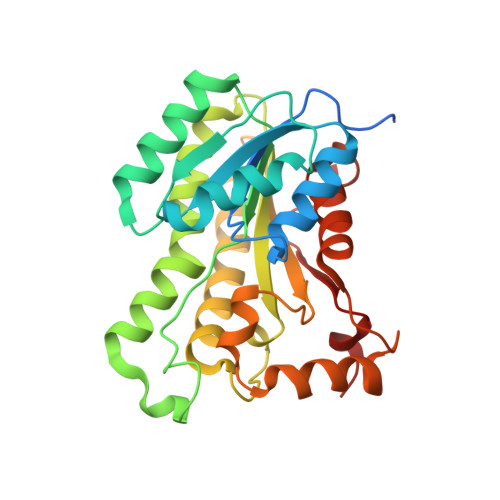Staphylococcus Aureus Fabi: Inhibition, Substrate Recognition and Potential Implications for in Vivo Essentiality
Schiebel, J., Chang, A., Lu, H., Baxter, M.V., Tonge, P.J., Kisker, C.(2012) Structure 20: 802
- PubMed: 22579249
- DOI: https://doi.org/10.1016/j.str.2012.03.013
- Primary Citation of Related Structures:
4ALI, 4ALJ, 4ALK, 4ALL, 4ALM, 4ALN - PubMed Abstract:
Methicillin-resistant Staphylococcus aureus (MRSA) infections constitute a serious health threat worldwide, and novel antibiotics are therefore urgently needed. The enoyl-ACP reductase (saFabI) is essential for the S. aureus fatty acid biosynthesis and, hence, serves as an attractive drug target. We have obtained a series of snapshots of this enzyme that provide a mechanistic picture of ligand and inhibitor binding, including a dimer-tetramer transition combined with extensive conformational changes. Significantly, our results reveal key differences in ligand binding and recognition compared to orthologous proteins. The remarkable observed protein flexibility rationalizes our finding that saFabI is capable of efficiently reducing branched-chain fatty acid precursors. Importantly, branched-chain fatty acids represent a major fraction of the S. aureus cell membrane and are crucial for its in vivo fitness. Our discovery thus addresses a long-standing controversy regarding the essentiality of the fatty acid biosynthesis pathway in S. aureus rationalizing saFabI as a drug target.
Organizational Affiliation:
Rudolf Virchow Center for Experimental Biomedicine, Institute for Structural Biology, University of W¨¹rzburg, D-97080 W¨¹rzburg, Germany.
















